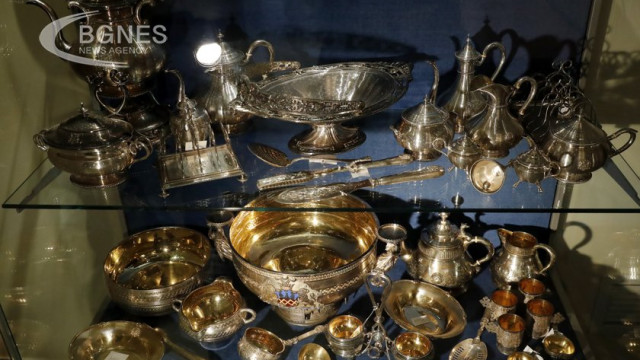Until the 19th century, when the German archaeologist Heinrich Schliemann discovered the city of Troy, which is at the centre of Homer's epic The Iliad, it was considered a myth. After its discovery, some other aspects of the Homeric legend became more tangible, such as the so-called golden treasure of Priam, apparently belonging to the Trojan king of the same name, the Greek Reporter reported.
The discovery of the golden treasure of the Trojan king Priam
In 1871, Schliemann began excavating the site of Hissarlik, which is now recognized as the ancient city of Troy. After discovering a level known as Troy II and identifying it as the same Troy written about in the Iliad, his next goal is to find Priam's golden treasure.
Since Priam was the monarch of Troy, Schliemann concluded that he must have hidden his treasure somewhere in the city so that it would not be stolen by the Greeks if the city fell to him. On May 31, 1873, Schliemann discovered the legendary treasure he was looking for.
It is assumed that he came upon it by accident, as he is said to have glimpsed gold in the face of the trench while straightening the side of the trench in the southwest part of the site.
After digging up the treasure and pulling it out of the ground, Schliemann took the finds and stored them in his log cabin. Besides gold and silver objects, Priam's treasure included several weapons, a copper cauldron, a shallow bronze pan, and a bronze cauldron.
Although Schliemann reported that Priam's treasure was a single find, other scholars doubted this claim, arguing that it was only a part of the entire hoard, of which most of the significant objects were discovered by the German archaeologist. Other artifacts were found at an earlier date.
Once the treasure was found, the Ottoman authorities sought to get hold of it. However, Schliemann was against this and developed a strategy to take the artifacts out of Ottoman territory.
How Schliemann managed to do this is still a mystery, and many proposals and theories attempt to explain it. One of them states that the archaeologist's wife, Sophia, took parts of the treasure through Ottoman customs, hiding them in her underwear. Schliemann was eventually put on trial by the Ottoman government.
He lost the case and was fined 400 lira ($500) in compensation to the Ottomans, but voluntarily paid 2,000 lira ($2,500) for unknown reasons.
After the discovery of Priam's golden hoard, Schliemann focused his efforts on finding a suitable museum in which to display the artefacts. Meanwhile, the treasure is kept in Schliemann's home. This is supposed to have been the cause of his anxiety.
In 1877, the golden hoard of Priam was first exhibited to the public at London's South Kensington Museum (now the Victoria and Albert Museum). After being on display for many years in London, Priam's golden hoard was moved to Berlin in 1881, and between 1882 and 1885 the artefacts were temporarily displayed at the Kunstgewerbe Museum before being moved to the newly built Ethnological Museum.
In the following decades, Priam's golden treasure was housed in the Ethnographic Museum in Berlin. However, after the defeat of the Nazi regime at the end of World War II, the treasure disappeared.
Suspicions are widespread that the Soviet troops occupying Berlin were responsible for looting the treasure and countless other priceless objects and works of art, which they then transported to Moscow.
The fact that the Soviet troops took Priam's golden treasure was denied by them until 1993, when it was first officially recognized that the treasure was actually located in Russia. Today, Priam's golden treasure remains in Russia. While the Russians consider the treasure to be war booty to compensate for their losses during World War II, the Germans consider it stolen property and want it back./BGNES







